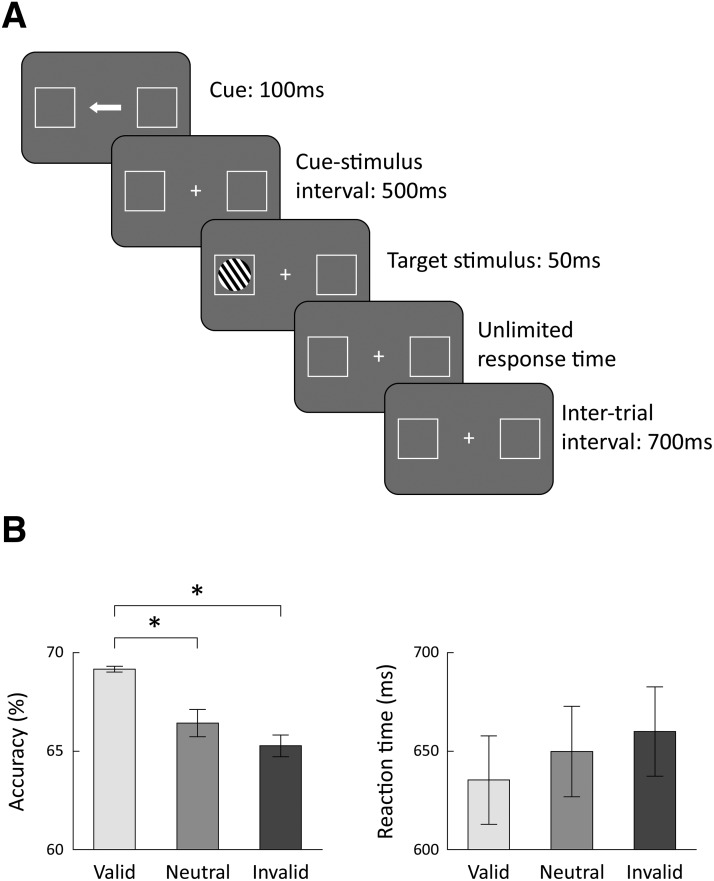Figure 1.
Experimental design and behavioral results. A, Experimental design of the orientation discrimination task. Each trial began with the presentation of a central cue (arrow) presented for 100 ms, which pointed to the left, right, or both sides. The cue was followed by a target stimulus, which consisted of black-and-white stripes and presented for 50 ms in the right or left visual field. Subjects reported whether the target stimulus was tilted to the left or right of vertical. The cue accurately predicted the target location in 60% of the trials (valid), pointed to the opposite location in 20% of the trials (invalid), and pointed to both locations in 20% of the trials (neutral). B, Mean accuracy rates (left) and reaction times (right) across subjects for each of the three conditions (valid, invalid, and neutral). Error bars indicate SEM across subjects. *p < 0.01, significant differences across conditions (post hoc Tukey's test).

